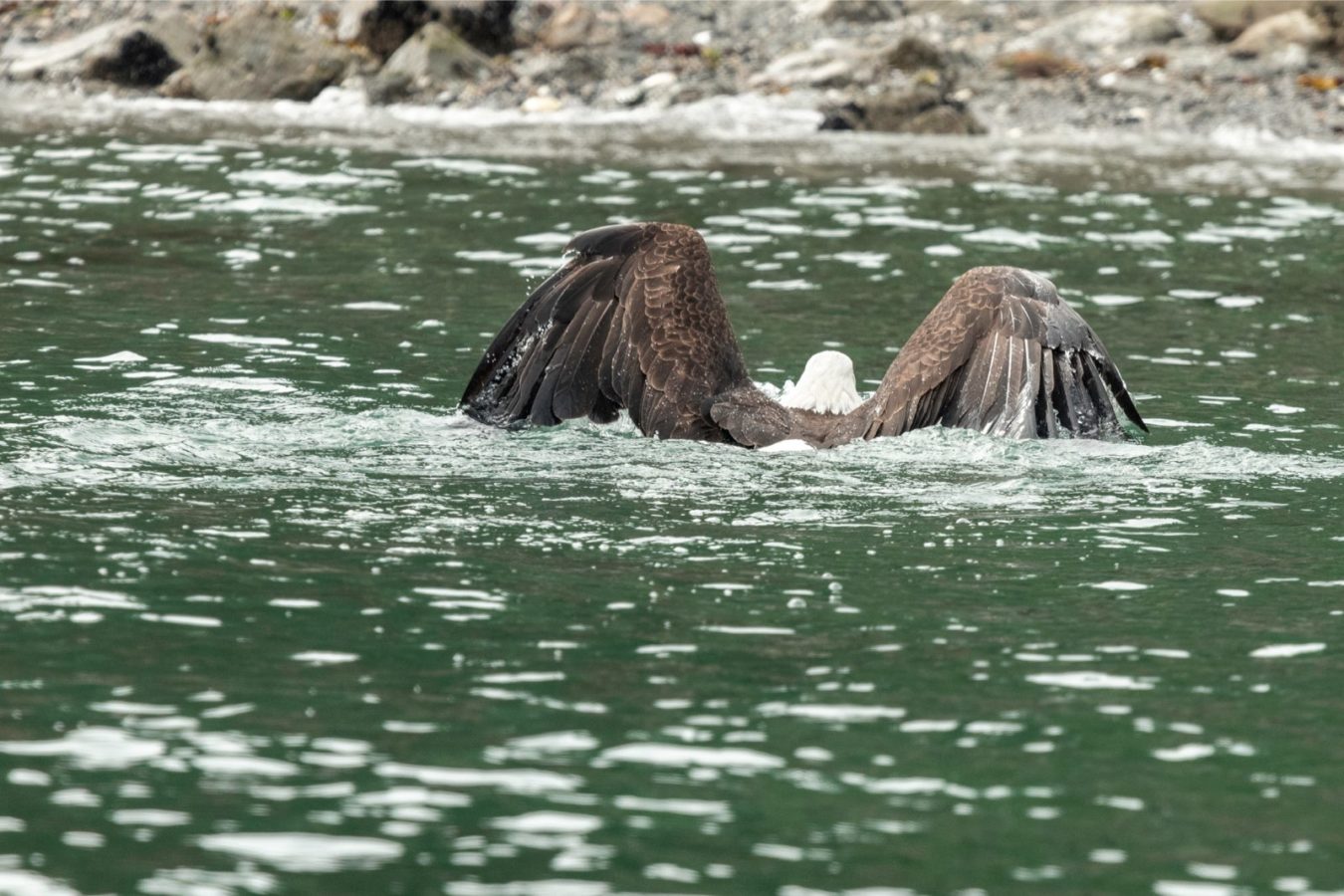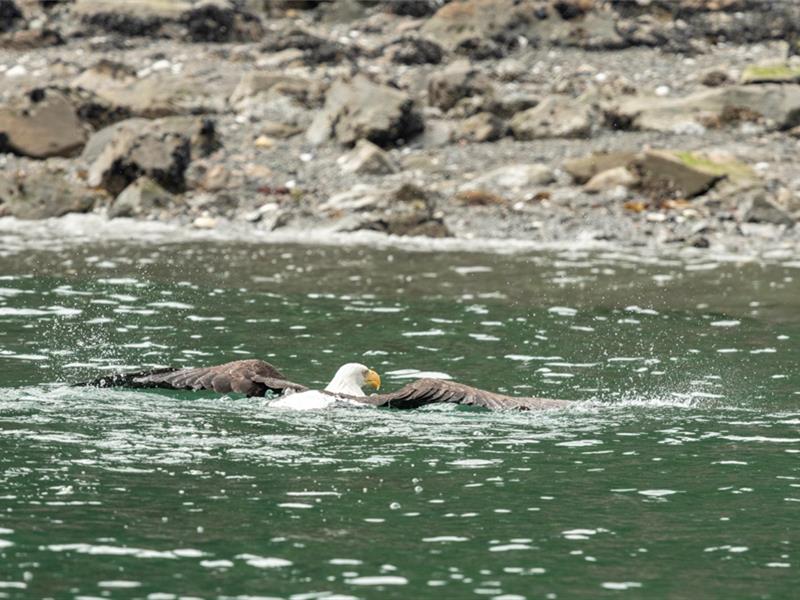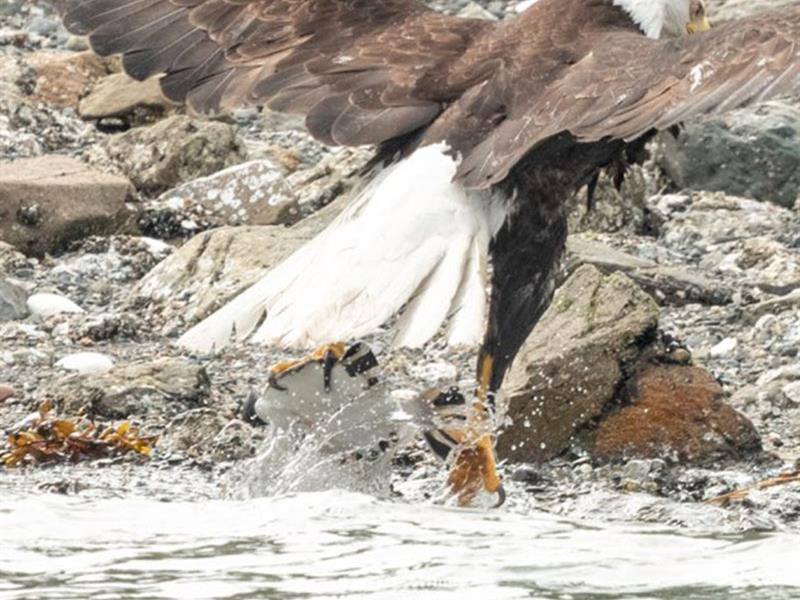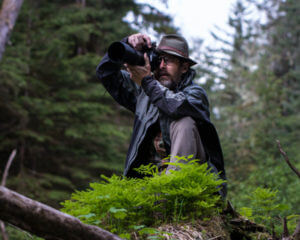The Price of Fresh Flounder: How A Professional Earns Their Keep in Juneau Alaska.

Whether whale watching, bear watching, or dining on fish and chips with a window table, a visit to Juneau is almost guaranteed to include plenty of bald eagle sightings. Scanning the Sitka Spruce trees along the miles of coastline and river bank reveals the polk-a-dots of white heads contrasted against dark green boughs.
During salmon runs, hundreds of eagles congregate around the mouths of creeks for easy meals, and on sunny days scores can be seen soaring high above Gastineau Channel. During courtship, they can be seen locking talons in dramatic aerial displays, or carrying sticks to their massive nests constructed high in the trees. There is even a well-known story of an eagle dropping a salmon mid-flight that collided with an Alaska Airlines 737 as it took off from the Juneau airport!
Indeed, bald eagles are synonymous with fish, and it is the fish that attract them to Southeast Alaska, but fish are not all they eat. Eagles will dine on the carcass of a roadkill deer just as happily as on a live salmon, and most of the fish they eat are either already dead or dying when they sink their talons into them.

When an eagle does take a live fish from the water, it can be one of the most graceful feats a visitor can experience. It is hard to witness a perfect grab without hearing the voice of Sir David Attenborough narrating the scene: An eagle soars high above the water, scanning the waves with her powerful binocular vision. Several hundred feet below, she sees a salmon just below the surface. Turning hard to the side, she tucks her wings into a blindingly fast stoop. With precise timing just before crashing into the ocean, she swoops up, leans back, and extends her bright yellow legs forward with talons wide spread. At the perfect moment, she plucks the unsuspecting fish from the waves, barely even splashing her feathers…
But not every dive for a fish is as deserving of Sir David’s commentary. Sometimes, a fishing eagle ends up with a lot of very wet feathers. Last summer, I encountered an eagle just after a not-quite-so-graceful dive.
We were passing out of the no wake zone on our Juneau whale watching tour, and Captain Kelly increased our speed, pointing the boat toward the narrow channel north of Coghlan Island. As we turned to enter the pass, we saw something splashing in the water, and slowed back down. An animal was swimming clumsily towards shore. As I reached for my binoculars, the white head became obvious.
A bald eagle was awkwardly breaststroking its way to the rocky island. Half submerged, it couldn’t fully pull its broad wings from the water, so that every stroke was two small steps forward, one small step back.

We all agreed the eagle must have a huge fish in its grasp causing it to struggle so, but when it finally reached shallow enough water to stand, we could see a small star flounder—one of several flatfish that call the Inside Passage home—in its grasp. With other eagles watching from the trees nearby, the soggy hunter quickly tugged the fish ashore, shook out its wings, then formed a shield with its wings, mantling its tasty catch from the view of would-be thieves.
As odd as it sounds, it is not an uncommon practice for bald eagles to swim their prey to shore. They may not be the most graceful swimmers, but their technique is effective enough, and with so many eagles out there competing for available meals, when they get hold of a fresh fish, it is in their best interest to not let go.

I can’t say I blame them, either; I have been known to spend $25 for local fried flatfish and chips. If I could get the same meal for a short, awkward breaststroke swim in the Inside Passage… On second thought, no, I think I’ll keep paying for my fish and chips to be delivered to my window seat, from which I can enjoy a cold beer and watch hunting bald eagles as I dine in warm, dry comfort.

About the Author: Jim Pfitzer is about to begin his second season as a guide for Gastineau, and his second year as an an Alaskan. He was born and raised in Chattanooga, TN, but has moved all over the country pursuing wild places and even wilder experiences. When asked about himself, Jim says he would rather paddle a canoe than drive a car, and prefers watching birds to watching television. “That about sums me up,” he says.

